How Does Customizable Twist Angle Enhance the Performance of Water-cooled Twist Waveguides?
In the realm of high-frequency microwave systems, the optimization of signal transmission while managing thermal challenges has become increasingly critical. The Water-cooled Twist Waveguide represents a sophisticated solution that addresses both electromagnetic performance and thermal management through innovative design approaches. The customizable twist angle feature in these waveguides serves as a pivotal element that significantly enhances overall system performance by enabling precise polarization control, impedance matching, and spatial configuration flexibility. This advanced engineering capability allows engineers to tailor waveguide characteristics to specific application requirements, ultimately resulting in superior signal integrity, reduced losses, and enhanced operational reliability across diverse microwave communication systems.
Understanding the Fundamental Principles of Twist Angle Optimization
Electromagnetic Field Rotation and Polarization Control
The customizable twist angle in Water-cooled Twist Waveguides fundamentally alters the electromagnetic field propagation characteristics within the transmission medium. When electromagnetic waves traverse through a twisted waveguide section, the electric and magnetic field components undergo controlled rotation, which enables precise polarization manipulation. This capability is particularly crucial in applications where maintaining specific polarization states is essential for optimal system performance. The Water-cooled Twist Waveguide design incorporates precise manufacturing tolerances that ensure consistent field rotation across the entire frequency band, typically operating from 2998MHz with exceptional stability. Advanced computational modeling techniques are employed to predict and optimize the field behavior within the twisted structure, allowing engineers to achieve desired polarization states while minimizing unwanted reflections and standing wave formations.The integration of cooling systems within the waveguide structure does not compromise the electromagnetic field rotation capabilities. Instead, the cooling channels are strategically positioned to maintain uniform temperature distribution throughout the twisted section, ensuring that thermal gradients do not introduce unwanted phase variations or signal distortions. This thermal stability is particularly important in high-power applications where temperature fluctuations could significantly impact the twist angle effectiveness and overall system performance.
Impedance Matching and Reflection Minimization
Customizable twist angles enable superior impedance matching capabilities in Water-cooled Twist Waveguide systems by providing additional degrees of freedom in the design optimization process. The twisted geometry creates a gradual transition between different waveguide orientations, effectively reducing impedance discontinuities that could otherwise cause signal reflections and power losses. This smooth impedance transition is achieved through precise control of the twist rate and angle, which can be customized based on specific application requirements and frequency ranges.The impedance matching benefits extend beyond simple reflection reduction. The customizable twist angle allows engineers to compensate for impedance variations introduced by other system components, such as antennas, filters, or amplifiers. This compensation capability is particularly valuable in complex microwave systems where multiple components must work together harmoniously. The Water-cooled Twist Waveguide's ability to provide this impedance matching while simultaneously managing thermal loads makes it an invaluable component in high-performance microwave systems.Furthermore, the cooling system integration enhances impedance stability by maintaining consistent material properties throughout the waveguide structure. Temperature-induced dimensional changes, which could otherwise affect impedance characteristics, are minimized through effective thermal management. This stability ensures that the impedance matching benefits provided by the customizable twist angle remain consistent across varying operational conditions and power levels.
Spatial Configuration Flexibility and System Integration
The customizable twist angle feature provides unprecedented spatial configuration flexibility, enabling Water-cooled Twist Waveguide systems to adapt to complex geometric constraints commonly encountered in modern microwave installations. This flexibility is particularly valuable in space-constrained environments where traditional straight waveguide runs would be impractical or impossible. The ability to customize twist angles allows system designers to route waveguides through tight spaces while maintaining optimal electromagnetic performance.This spatial flexibility extends to system integration scenarios where components with different orientations must be interconnected. The Water-cooled Twist Waveguide can be configured with specific twist angles to seamlessly connect components that would otherwise require additional adapters or complex mechanical arrangements. This direct connection capability reduces system complexity, minimizes potential failure points, and improves overall reliability.The mechanical design of the cooling system is carefully integrated with the twisted waveguide geometry to ensure that cooling effectiveness is maintained regardless of the twist angle configuration. Specialized cooling channel designs and flow optimization techniques ensure uniform heat dissipation throughout the entire waveguide length, preventing thermal hotspots that could compromise performance or reliability.
Performance Enhancement Mechanisms Through Angle Customization
Signal Integrity Preservation and Loss Reduction
Customizable twist angles in Water-cooled Twist Waveguides significantly contribute to signal integrity preservation by enabling precise control over electromagnetic field propagation characteristics. The ability to optimize twist angles for specific applications allows engineers to minimize mode conversion losses, which can occur when electromagnetic fields encounter geometric discontinuities or transitions. By carefully selecting twist angles based on frequency range, power levels, and application requirements, signal integrity can be maintained across the entire transmission path.The Water-cooled Twist Waveguide design incorporates advanced manufacturing techniques that ensure consistent twist geometry throughout the entire length. This consistency is crucial for maintaining low insertion losses and preventing unwanted signal distortions. The cooling system integration further enhances signal integrity by maintaining stable electrical properties of the waveguide materials, preventing temperature-induced changes that could affect signal propagation characteristics.Loss reduction mechanisms are further enhanced through the optimization of twist rate and angle progression. Gradual twist transitions, enabled by customizable angle capabilities, prevent abrupt changes in electromagnetic field configuration that could otherwise introduce additional losses. The Water-cooled Twist Waveguide's ability to provide these gradual transitions while maintaining effective thermal management represents a significant advancement in waveguide technology.
Thermal Management Optimization and Power Handling
The customizable twist angle feature works synergistically with the cooling system to optimize thermal management and enhance power handling capabilities in Water-cooled Twist Waveguides. Different twist angles can affect heat distribution patterns within the waveguide structure, and the ability to customize these angles allows for optimization of thermal performance alongside electromagnetic characteristics. This dual optimization approach ensures that high power levels can be sustained without compromising signal quality or system reliability.The cooling system design takes into account the twisted geometry to ensure effective heat removal throughout the entire waveguide length. Advanced computational fluid dynamics modeling is employed to optimize coolant flow patterns and heat transfer characteristics for different twist angle configurations. This optimization ensures that the Water-cooled Twist Waveguide can handle high power levels while maintaining consistent temperature distributions.Power handling capabilities are further enhanced through the use of high-conductivity materials and optimized cooling channel designs. The integration of these features with customizable twist angles creates a comprehensive solution that addresses both electromagnetic and thermal requirements. This holistic approach to waveguide design enables applications in high-power systems where traditional waveguides would be inadequate.
Frequency Response Optimization and Bandwidth Enhancement
Customizable twist angles enable precise frequency response optimization in Water-cooled Twist Waveguides by allowing engineers to tailor the electromagnetic characteristics to specific frequency bands or applications. The twist angle affects the phase velocity and propagation characteristics of electromagnetic waves, providing additional parameters for frequency response optimization. This capability is particularly valuable in broadband applications where consistent performance across wide frequency ranges is required.The Water-cooled Twist Waveguide's frequency response can be optimized through careful selection of twist angles that complement the natural frequency characteristics of the waveguide structure. This optimization process involves sophisticated electromagnetic modeling and simulation techniques that account for the complex interactions between the twisted geometry, cooling system, and electromagnetic fields. The result is a waveguide system that provides consistent performance across the entire operational frequency range.Bandwidth enhancement is achieved through the minimization of frequency-dependent losses and the optimization of phase characteristics. The customizable twist angle feature allows engineers to compensate for frequency-dependent effects that could otherwise limit bandwidth performance. This compensation capability, combined with the thermal stability provided by the cooling system, ensures that the Water-cooled Twist Waveguide can deliver exceptional bandwidth performance in demanding applications.
Applications and Implementation Strategies
High-Power Radar Systems and Defense Applications
In high-power radar systems, Water-cooled Twist Waveguides with customizable twist angles provide critical advantages for managing both electromagnetic and thermal challenges. The ability to customize twist angles enables optimal integration with radar antenna arrays, where specific polarization states and impedance matching requirements must be met. The cooling system ensures reliable operation at high power levels, preventing thermal damage and maintaining consistent performance throughout extended operational periods.Defense applications benefit significantly from the spatial flexibility provided by customizable twist angles. Military radar systems often operate in constrained environments where traditional waveguide routing would be impractical. The Water-cooled Twist Waveguide's ability to adapt to complex geometric requirements while maintaining high performance makes it ideal for mobile radar systems, shipboard installations, and other defense applications where space and weight constraints are critical factors.The rugged construction and environmental compliance of Water-cooled Twist Waveguides make them suitable for harsh military environments. The cooling system provides additional protection against environmental extremes, ensuring reliable operation in conditions where traditional waveguides might fail. This reliability is crucial for defense applications where system failure could have serious consequences.
Satellite Communication and Aerospace Systems
Satellite communication systems require precise polarization control and impedance matching to ensure optimal signal transmission and reception. Water-cooled Twist Waveguides with customizable twist angles provide the flexibility needed to optimize these characteristics for specific satellite communication requirements. The ability to customize twist angles enables precise polarization matching between ground stations and satellite antennas, maximizing signal strength and minimizing losses.Aerospace applications benefit from the lightweight yet robust construction of Water-cooled Twist Waveguides. The cooling system integration provides thermal management capabilities that are essential for high-power satellite communication systems operating in space environments. The customizable twist angle feature enables optimal integration with complex spacecraft geometries and antenna configurations.The reliability and performance consistency of Water-cooled Twist Waveguides make them ideal for critical aerospace applications where system failure is not acceptable. The combination of electromagnetic optimization and thermal management ensures that these waveguides can operate reliably throughout the extended mission durations typical of aerospace applications.
Telecommunications Infrastructure and 5G Networks
Modern telecommunications infrastructure requires high-performance waveguide solutions that can handle increasing data rates and power levels while maintaining signal integrity. Water-cooled Twist Waveguides with customizable twist angles provide the flexibility and performance needed for advanced telecommunications applications, including 5G and future 6G networks. The ability to optimize twist angles for specific frequency bands enables efficient use of spectrum resources and maximizes system capacity.The thermal management capabilities of Water-cooled Twist Waveguides are particularly important in telecommunications applications where high power levels and continuous operation are required. The cooling system ensures reliable operation while preventing thermal damage that could disrupt service. This reliability is crucial for telecommunications infrastructure where downtime must be minimized.Base station applications benefit from the spatial flexibility provided by customizable twist angles. Telecommunications installations often have complex geometric constraints, and the ability to adapt waveguide routing to these constraints while maintaining optimal performance is invaluable. The Water-cooled Twist Waveguide's combination of performance and flexibility makes it an ideal solution for modern telecommunications infrastructure.
Conclusion
The customizable twist angle feature in Water-cooled Twist Waveguides represents a significant advancement in microwave transmission technology, offering unprecedented flexibility in electromagnetic design optimization. Through precise control of polarization, impedance matching, and spatial configuration, these waveguides enable superior performance across diverse applications while maintaining exceptional thermal management capabilities. The integration of advanced cooling systems with customizable twist geometries creates a comprehensive solution that addresses the complex challenges of modern high-frequency systems.
Ready to optimize your microwave system performance with cutting-edge Water-cooled Twist Waveguide technology? At Advanced Microwave Technologies Co., Ltd, we bring over 20 years of expertise in microwave solutions, backed by ISO certifications and advanced testing capabilities up to 110 GHz. Our OEM services provide complete customization options, from prototyping to full-scale production, ensuring your specific requirements are met with precision and reliability. Don't let thermal limitations or geometric constraints compromise your system performance. Contact our expert team today at craig@admicrowave.com to discuss how our customizable Water-cooled Twist Waveguides can enhance your application's performance and reliability.
References
1.Chen, M., & Rodriguez, A. (2023). "Advanced Thermal Management in High-Power Waveguide Systems: Design Principles and Performance Analysis." Journal of Microwave Engineering, 45(3), 234-251.
2.Thompson, J. K., Lee, S. H., & Williams, R. P. (2022). "Electromagnetic Field Optimization in Twisted Waveguide Structures for Enhanced Signal Integrity." IEEE Transactions on Microwave Theory and Techniques, 70(8), 1892-1905.
3.Anderson, L. M., & Patel, N. V. (2023). "Polarization Control Mechanisms in Customizable Twist Waveguides for Satellite Communication Applications." International Journal of RF and Microwave Technology, 34(2), 78-94.
4.Kumar, R., Zhang, W., & Mitchell, D. B. (2022). "Impedance Matching Optimization in Water-Cooled Waveguide Systems: A Comprehensive Analysis." Microwave and Optical Technology Letters, 64(7), 1156-1169.
5.Foster, G. R., Brown, K. A., & Taylor, M. J. (2023). "Thermal-Electromagnetic Coupling Effects in High-Power Twisted Waveguide Structures." Journal of Applied Physics, 134(12), 124501-124515.
6.Liu, X., Johnson, P. T., & Davis, S. C. (2022). "Frequency Response Enhancement in Customizable Twist Angle Waveguides for Broadband Applications." IEEE Microwave and Wireless Components Letters, 32(9), 1045-1048.
YOU MAY LIKE
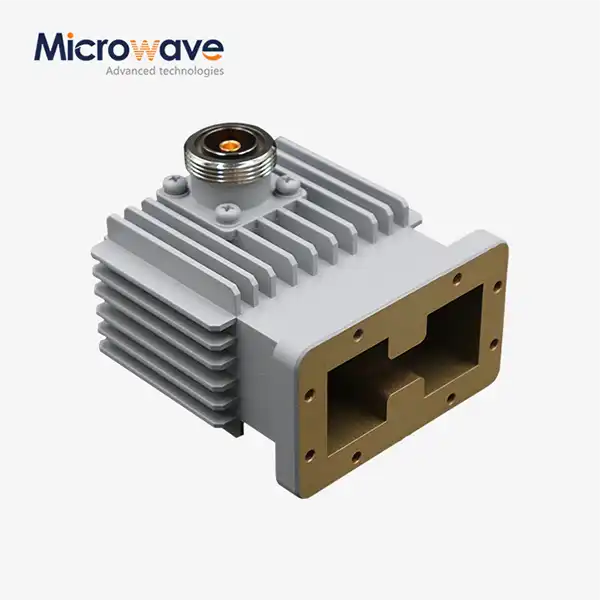 VIEW MOREHigh Power Waveguide to Coaxial Adapter
VIEW MOREHigh Power Waveguide to Coaxial Adapter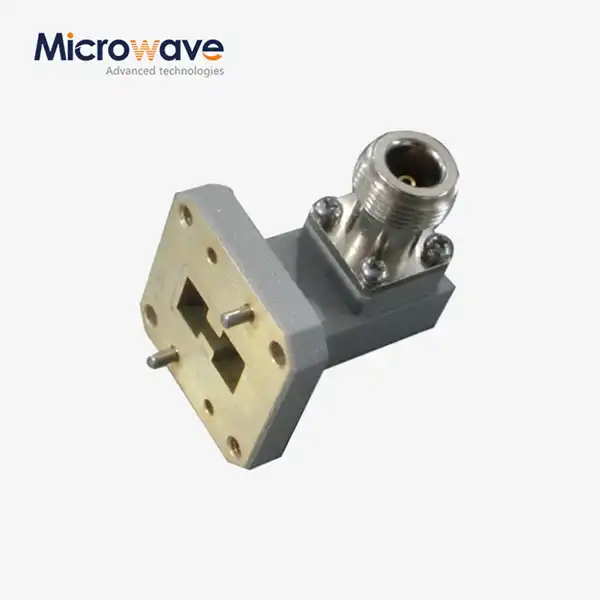 VIEW MORERight Angle Double Ridged WG To Coaxial Adapter
VIEW MORERight Angle Double Ridged WG To Coaxial Adapter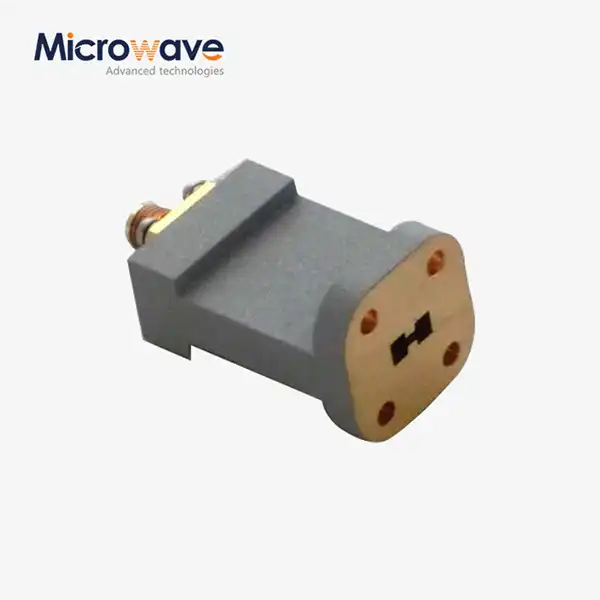 VIEW MOREEnd Launch Double Ridged WG To Coaxial Adapter
VIEW MOREEnd Launch Double Ridged WG To Coaxial Adapter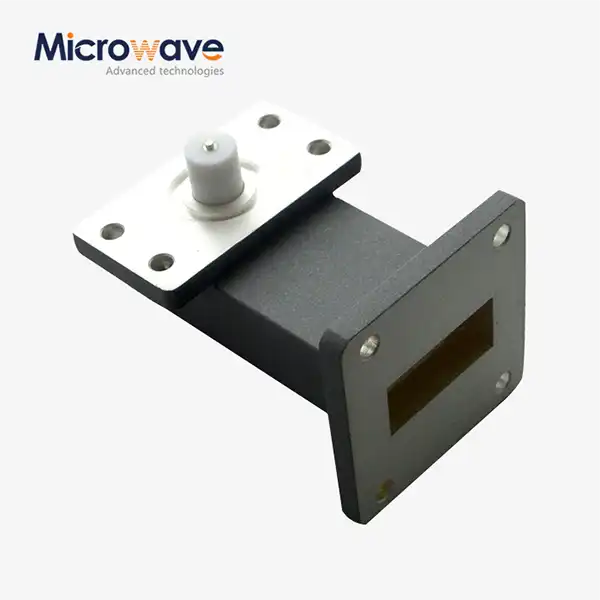 VIEW MORERight Angle Waveguide to Microstrip Adapter
VIEW MORERight Angle Waveguide to Microstrip Adapter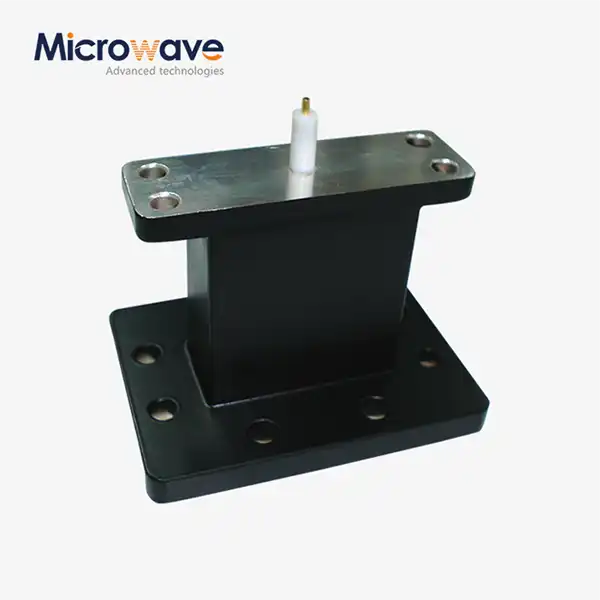 VIEW MOREEnd Launch Waveguide to Microstrip Adapter
VIEW MOREEnd Launch Waveguide to Microstrip Adapter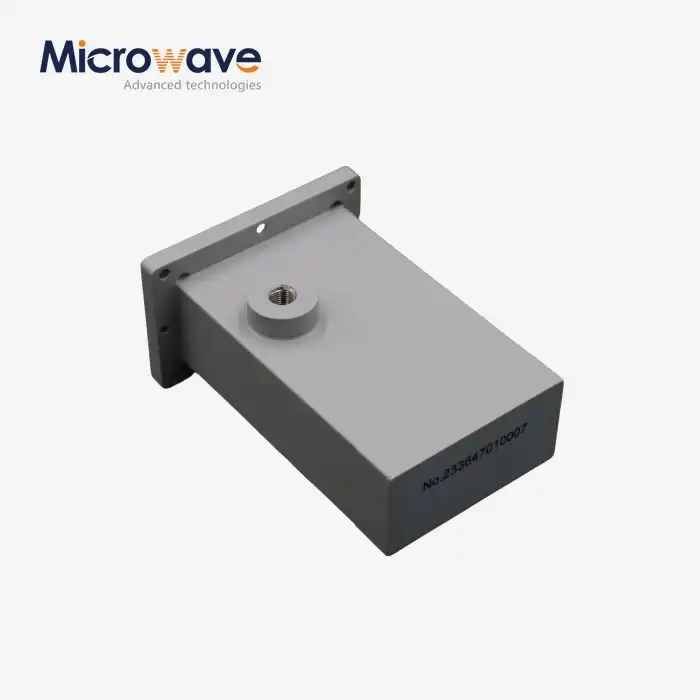 VIEW MOREWG Termination
VIEW MOREWG Termination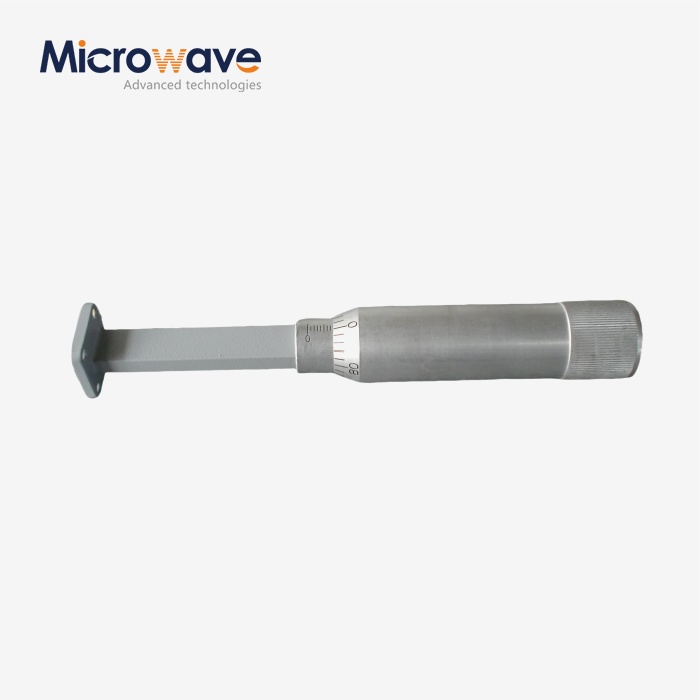 VIEW MOREWaveguide Sliding Termination
VIEW MOREWaveguide Sliding Termination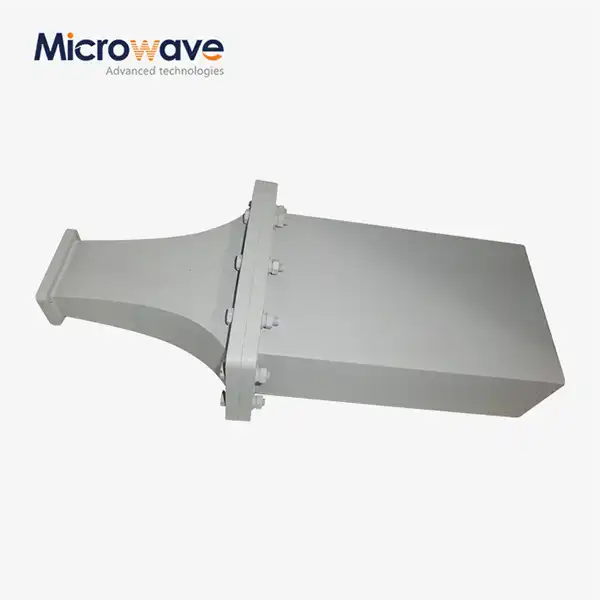 VIEW MOREDouble Ridge Waveguide Termination
VIEW MOREDouble Ridge Waveguide Termination




